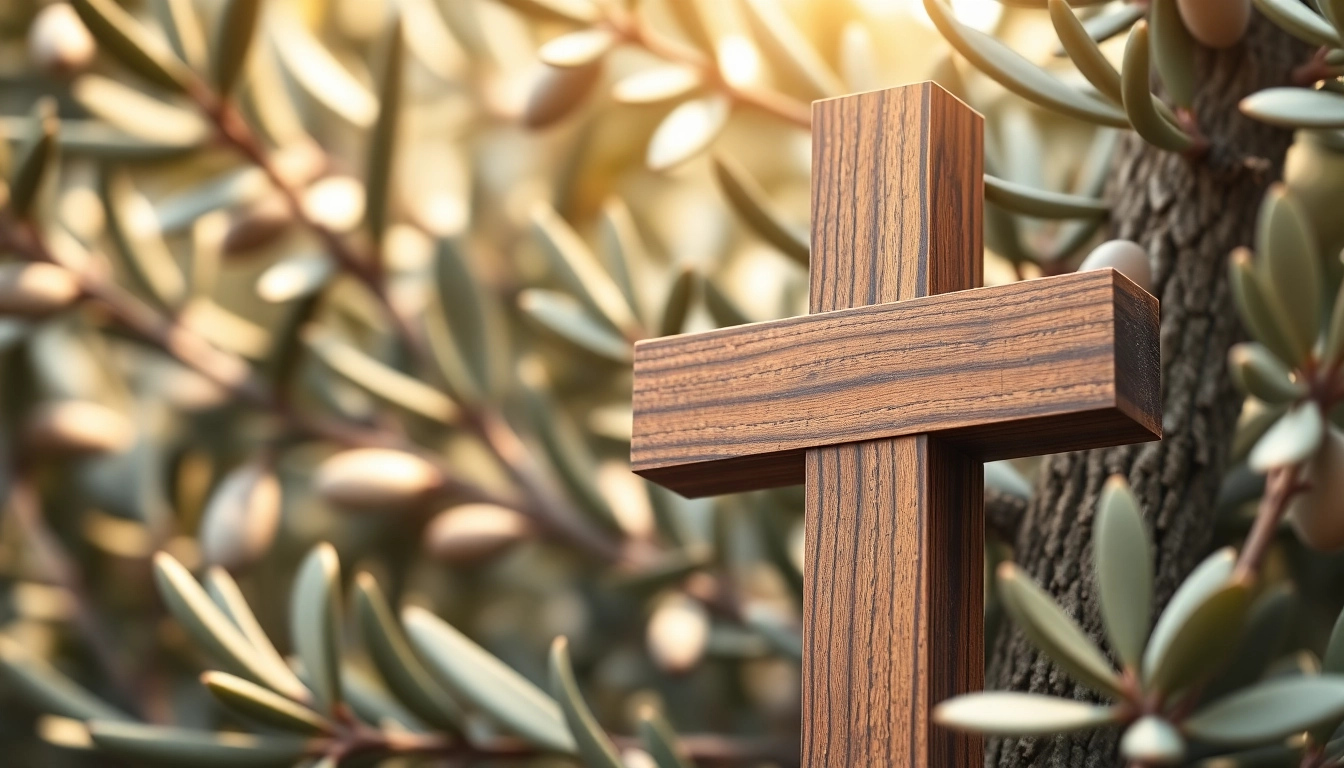Understanding Jerusalem Crosses: Historical and Cultural Context
The Jerusalem cross, also known as the Crusader’s cross or the five-fold cross, holds profound significance within Christianity and has permeated various cultures over centuries. This distinctive heraldic symbol consists of a large cross potent at the center, surrounded by four smaller Greek crosses in the quadrants. Together, these elements represent not only the theological underpinnings of the faith but also the historical intricacies surrounding the city of Jerusalem itself. This article delves into the origins, historical relevance, and cultural adaptations of the Jerusalem cross, shedding light on its enduring legacy within the Christian faith.
The Origin of the Jerusalem Cross
The origins of the Jerusalem cross date back to the 11th century during the Crusades. It was first adopted as a symbol of the Kingdom of Jerusalem, which was established by European Christians following the First Crusade in 1099. The cross evolved as a visual representation of faith and conquest, symbolizing the spread of Christianity from the Holy City. The large central cross is a potent emblem, signifying Jesus Christ’s crucifixion, while the smaller crosses symbolize the Four Evangelists—Matthew, Mark, Luke, and John—who preached the gospel in respective directions worldwide. This connection further illustrates the idea of Christ’s teachings reaching beyond Jerusalem to all corners of the earth.
Historical Use in Christianity
Throughout history, the Jerusalem cross has been used as a significant emblem among various Christian communities. It is recognized in both Catholic and Orthodox traditions, enhancing its richness as a symbol of faith. During the time of the Crusaders, the cross was worn by knights and soldiers to signify their mission of spreading Christianity and reclaiming the Holy Land. Its usage extended beyond warfare, becoming a badge of honor and a reminder of the responsibilities inherent in the Christian faith.
Additionally, references to the Jerusalem cross can be found in numerous historical manuscripts and artifacts, indicating its influence on Christian iconography. The cross served as a rallying symbol during various religious pilgrimages to Jerusalem, reinforcing its association with holy sites like the Church of the Holy Sepulchre, a pivotal location for Christians around the world.
Variations Across Cultures and Time
As the years passed, the Jerusalem cross transcended its initial geographic confines, adapting to various cultures while retaining its core symbolism. Different variations emerged, embracing local materials and artistic styles. In Eastern Christian traditions, for instance, the cross may be embellished with intricate designs that reflect regional artistry, while in Western contexts, simpler versions might prevail.
Today, the symbolism of the Jerusalem cross has transcended religious boundaries, captivating those interested in history and art. It continues to be a subject of fascination even as new forms of representation arise, such as jewelry and home decor, ensuring its presence in contemporary culture. Furthermore, its adaptability ensures that it remains a relevant emblem across different Christian denominations and among other communities.
The Design Elements of Jerusalem Crosses
Structure and Symbolism of the Unique Design
The design of the Jerusalem cross is distinctive and striking, characterized by both its structure and symbolic depth. The large central cross is raised, indicating its prominence in the faith, while the four smaller crosses represent the dissemination of Christian teachings to every corner of the world, often interpreted as the Four Corners of the Globe where the gospel is meant to reach. The structural elements of the cross potent symbolize Christ’s victory over death and the promise of salvation, reinforcing hope and divine protection for believers.
Materials Used in Crafting Jerusalem Crosses
The Jerusalem cross comes in a variety of materials reflecting both the artisan’s choices and cultural preferences. While many crosses are crafted from precious metals like gold and silver, others employ more humble materials such as wood, stone, or even glass. The type of material can significantly influence the cross’s appearance and tactile connection to the wearer or observer.
For instance, gold Jerusalem crosses often symbolize opulence and are worn during special occasions or given as gifts, while handcrafted wooden crosses, especially those made from olive wood of the Holy Land, carry a rustic charm and a direct connection to the geographical roots of the symbol. This diversity in materials allows individuals to choose a cross that resonates with their aesthetic preferences and spiritual significance.
The Role of Olive Wood in Cross Making
One of the most acclaimed materials for crafting Jerusalem crosses is olive wood from the Holy Land. This wood is valued not only for its beautiful grain and durability but also for its deep spiritual significance. The olive tree is often associated with peace and reconciliation, making it an ideal choice for Christian symbolism.
Artisans in Bethlehem have meticulously honed the craft of making olive wood crosses, using traditional techniques passed down through generations. Each cross is unique, reflecting the natural variations of the wood itself. Purchasing these crosses supports local artisans and serves as a tangible connection to the biblical lands, allowing individuals to hold a piece of Christian heritage close to their hearts.
Significance of Jerusalem Crosses in Modern Christianity
Spiritual Meaning and Importance in Faith
In contemporary Christianity, the Jerusalem cross is recognized not only as a symbolic relic of ancient history but also as a vital component of personal faith. For many believers, wearing or displaying a Jerusalem cross can serve as a profound reminder of their spiritual journey and commitment to Christ. It acts as an emblem of faith, hope, and love, encapsulating the essence of Christian teachings.
Moreover, the Jerusalem cross represents unity among Christians, given its shared significance across different denominations. Its presence in worship spaces, homes, and personal adornments signifies a collective adherence to the gospel message, bringing believers together across varying backgrounds and cultures.
The Jerusalem Cross in Religious Practices
The Jerusalem cross continues to play a role in various religious practices, including baptisms, confirmations, and other rites of passage. During these ceremonies, individuals may receive or wear a Jerusalem cross as a symbol of their faith commitment and connection to the larger Christian community. These moments serve to visually and physically reinforce the spiritual themes represented by the cross, reminding participants of their vows and responsibilities as Christians.
In addition, many churches incorporate the Jerusalem cross into liturgical settings, using it in decorations and altar embellishments. Its visibility during services elevates the communal worship experience, creating a focal point that draws attention to the central tenets of the faith.
Representations in Art and Literature
The Jerusalem cross has inspired numerous interpretations in art and literature, serving as a rich subject for creative expression. In visual arts, it is frequently depicted in paintings, sculptures, and stained glass, each artist bringing their unique perspective to this age-old symbol. Iconography surrounding the Jerusalem cross often explores themes of faith, sacrifice, and salvation, emphasizing its significance in Christian narrative and heritage.
Writers and poets have also harnessed the symbolism of the Jerusalem cross, employing it to evoke profound emotional and theological reflections. Throughout history, texts have used the cross as a metaphor for suffering, redemption, and the transformative power of faith, further embedding it within the cultural and spiritual consciousness of believers.
Popular Variations and Their Unique Meanings
Different Styles of Jerusalem Crosses Available
While the traditional Jerusalem cross remains the most recognizable form, variations exist that cater to diverse tastes and preferences. Styles may range from minimalist designs that strip down the symbolism to its essential elements, to ornate representations embellished with precious stones or intricate carvings.
Fashion trends have also influenced the design of Jerusalem crosses. Modern adaptations may incorporate contemporary aesthetics that resonate with younger audiences while retaining the historical significance of the original symbol. As such, these variations allow individuals to express their faith in ways that align with personal style while maintaining a connection to their religious heritage.
The Role of Jerusalem Cross Jewelry
Jewelry featuring the Jerusalem cross has gained popularity as a meaningful accessory. The cross is available in various formats, including pendants, bracelets, and earrings, appealing to both men and women. Wearing Jerusalem cross jewelry allows individuals to carry their faith with them as an everyday reminder of their spiritual beliefs.
Moreover, such pieces often serve as conversation starters, allowing wearers to share their beliefs and the significance behind the cross’s design. The growing popularity of Jerusalem cross jewelry illustrates the intersection of faith and fashion, as believers seek to meld personal style with spiritual expression.
How to Choose Your Jerusalem Cross
Choosing a Jerusalem cross can be a deeply personal experience, and various factors may guide individuals in making their selection. When selecting a cross, consider the following aspects:
- Symbolism: Reflect on what the cross symbolizes for you personally. Additionally, consider whether you prefer a traditional design or a more modern interpretation.
- Material: Decide on the material that resonates most with you—whether it’s gold, silver, or olive wood—keeping in mind its significance and suitability for daily wear.
- Size and Style: Choose a size that fits comfortably in your intended context, whether as a necklace or displayed in your home. Think about how the style complements your personal fashion or decor aesthetics.
- Quality: Ensure that you purchase from reputable artisans or retailers to guarantee authenticity and craftsmanship, especially if selecting a piece made from traditional materials like olive wood.
By considering these elements, you can find a Jerusalem cross that enhances your faith while aligning with your personal values and tastes.
Where to Purchase Authentic Jerusalem Crosses
Trusted Retailers and Online Stores
Finding an authentic Jerusalem cross requires sourcing from reputable retailers known for their quality craftsmanship. Numerous online shops specialize in religious artifacts and jewelry, including the coveted Jerusalem cross. One such resource is Jerusalem crosses, which offers a variety of options ideal for anyone seeking authentic pieces representing their spiritual journey.
Additionally, local religious gift shops and boutiques, particularly those in regions with historical links to Christianity, often carry handmade items crafted by local artisans. These physical stores provide an opportunity to connect with the craftsmanship and cultural significance embedded in each piece.
Tips for Identifying Authenticity in Crosses
When shopping for a Jerusalem cross, consider these tips to ensure authenticity:
- Research the Artisan: Investigate the maker or retailer for their history and reputation within the community. Legitimate shops often have a strong commitment to craftsmanship and maintaining traditional methods.
- Ask About Materials: Inquire about the materials used in crafting the cross, especially if it’s made from olive wood or precious metals. Authentic pieces often have a clear origin and quality documentation.
- Look for Certifications: Reputable retailers may provide certifications of authenticity, especially for higher-value pieces, ensuring that you are purchasing a genuine article rather than a mass-produced imitation.
Supporting Local Artisans for Faith-Based Crafts
Today, supporting local artisans not only promotes fair trade but also nurtures cultural heritage. By purchasing Jerusalem crosses made by local craftspeople, individuals contribute to the sustainability of traditional methods and the preservation of rich religious narratives. Additionally, many artisans impart their unique stories and cultural insights through their work, enriching the buyer’s experience with meaningful connections to their faith.
Engaging with local craftsmanship fosters a sense of community and connection to the heritage of the land. It enhances the significance of the piece, transforming it from a mere artifact into a valued symbol of history, tradition, and spirituality.
In conclusion, the Jerusalem cross remains a timeless emblem of Christianity, embodying a rich tapestry woven from faith, history, and cultural expression. Its multifaceted significance encourages believers to explore their spirituality while connecting with the broader Christian community. As one stands before the Jerusalem cross, they are reminded not just of the past, but also of the hope and unity that faith continues to inspire.


